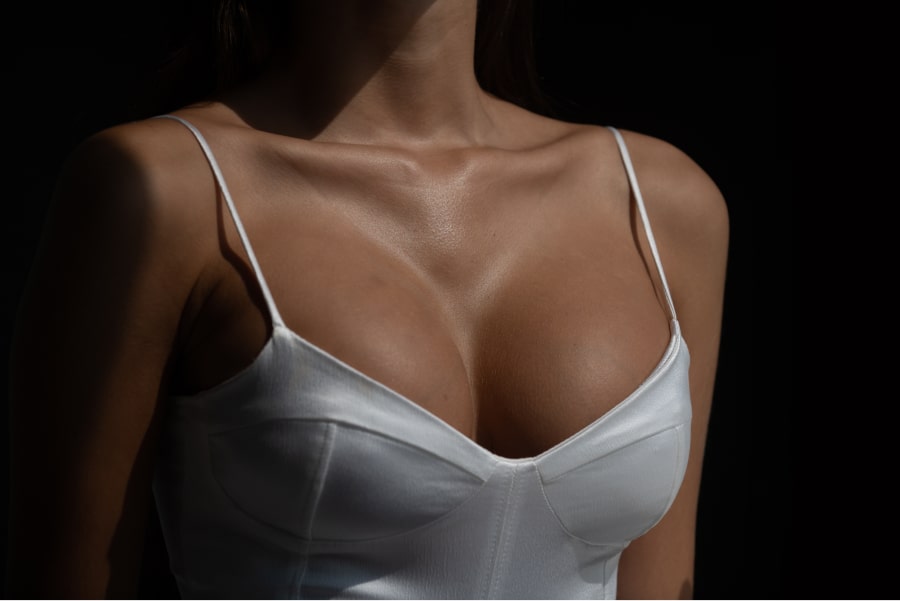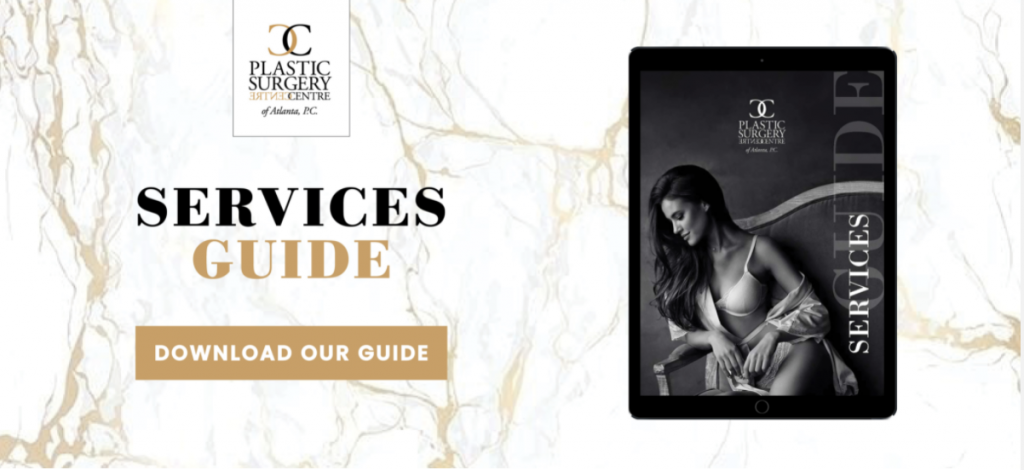Posted March 03, 2023 in Blog

Breast implants can bring a lot of joy and self-confidence to women, but there are others that, unfortunately, experience breast implant illness which is a serious downside to them. Breast implant illness is a somewhat difficult topic to navigate since the exact cause of the condition is still unknown, and data remains murky. However, most plastic surgeons now admit that there can be an association between breast implants used in breast augmentation and several symptoms resulting from the body rejecting the implants.
As more studies are done on the subject, more light and understanding are being shed on the topic, which some patients describe as a mysterious illness with a quick onset of symptoms..
While most breast augmentation with breast implant patients tend to be just fine with the surgery, breast implant illness (BII) reportedly affects a percentage of patients. Here’s everything to know about BII and what to do if you believe it affects your breasts and overall health and well-being.
What is Breast Implant Illness?
Breast implant illness is a chronic condition often categorized by the onset of one or more symptoms following a breast implant surgery. While the symptoms vary from patient to patient, they typically include joint and muscle pain, chronic fatigue, skin rashes and anxiety. However, the exact cause of breast implant illness is unknown. Not every patient who undergoes a breast augmentation experiences these side effects. There’s no rhyme or reason why some feel sick after living with breast implants while others are perfectly fine.
Any time the body is introduced to something new, it either accepts it or tries to attack it. This can even happen with FDA-approved medical devices like breast implants. Although breast implants have been used in cosmetic surgeries for decades the recent onset of breast implant illness is affecting more women than ever before, leaving some weary of their breast implants and wanting to remove them. While some surgeons are on the fence about whether the illness is ‘real’ or not, others are actively searching and researching why breast implant illness may occur after a breast augmentation surgery.
How and why breast implant illness forms are still relatively unknown. Many theories suggest that the condition and symptoms arise from inflammation that is caused by silicone. But that’s not the only theory behind it. Others suggest the implants may bring out other diseases, cause immune responses, chronic inflammation, allergies, and even heavy metal poisoning.
Although some patients assume there’s a connection between textured breast implants (recalled a few years ago for other reasons) and breast implant illness, there’s still no hard evidence that connects the two. Breast implant illness seems to be more in the limelight than ever before, but the belief is that its first reported cases date back to the 1960s. Social media has brought more attention to breast implant illness, with dozens upon dozens of patients sharing their stories on various platforms.
No matter the type of breast implants used in surgery—saline, silicone, gel, smooth or textured—the potential for breast implant illness can arise. Still, breast implant illness is not medically recognized because of the lack of medical data. Therefore, the FDA has issued a statement with changes to breast implant labels so that all the content, warnings and information on the packaging are understandable to patients so that they understand and can discuss the benefits and risks of surgery with breast implants.
Those patients who choose to have an explant (a surgery that removes the implants) may find relief and improve their symptoms.
What are the top breast implant illness symptoms?
Several symptoms can be tied to BII, and each patient experiences something different. Some patients display one or more symptoms post-surgery, while others exhibit signs of nearly all the common symptoms.
These are the most common breast implant illness symptoms:
- Joint, muscle, and breast pain
- General fatigue
- Hair loss
- Skin rashes
- Brain fog
- Depression and/or anxiety
- Autoimmune diseases and related symptoms
- Chronic inflammation
- Fluctuating weight
- Numbness and tingling sensations
- Flu-like symptoms
- Fevers
- Difficult breathing
- Dry eyes and blurred vision
There are over 100 symptoms that are believed to be associated with BII, and some may be related to other autoimmune conditions and diseases. However, just because you experience one or more symptoms of BII doesn’t necessarily mean you have BII. The best way to determine if you are suffering from breast implant illness is to schedule a consultation for a thorough examination.
How common is breast implant illness?
It’s hard to pinpoint how many breast implants are affected by breast implant illness, but there is growing awareness and concern. While statistics are weak, hundreds of thousands of women have undergone explant surgeries in an attempt to alleviate their conditions.
According to the FDA, breast implants’ risk of complications or adverse effects is around 1%. Those complications aren’t the same as the symptoms of BII, but they can include the following:
- Breast pain
- Nipple and breast changes, including sensation
- Scar tissue
- Numbness
- Delayed and poor healing
- Rupture, leaking, and tearing
- Wrinkling
- Displacement and rotation
Breast implant illness and weight gain
Gaining weight alongside breast implant illness isn’t uncommon, but it doesn’t happen to all patients. It’s also normal to put on a few pounds after a breast augmentation since the additional weight of the implants, extra fluid retention, and pausing on your daily workout routine can add additional weight to your baseline weight. Usually, most patients who gain a bit of weight from being sedentary after surgery lose weight once they resume their routine.
It is still unknown if the implants themselves or the symptoms of the illness are responsible for potential weight gain.
What are the solutions for breast implant illness?
A few options are available for getting rid of the symptoms associated with BII. Some patients find that removing their implants (an explant) alleviates all of their symptoms and feelings of sickness, while others only notice a slight improvement. Still, no scientific data proves that explant procedures are the ‘cure’ for breast implant illness, and some symptoms may still linger even if they are not as extreme as before.
The leading solutions for trying to alleviate the symptoms of breast implant illness include:
En Bloc Capsulectomy: This surgery involves removing the complete implant, scar tissue, and the uncut capsule that holds the implants. It’s also the preferred technique for addressing silicone leakage, too. An en bloc capsulectomy is different from a traditional capsulectomy because all of the scar tissue surrounding the implant and in the breast is extracted as one piece. The implant is also removed with all of the scar tissue surrounding it attached or all together (hence, its name). Removing the scar tissue and implant as one unit, instead of dissecting the tissue away from the implant, leaves less room for error. It’s also on the surgeon, to be honest and upfront, with the approach and technique that will be used since most patients don’t see the removed implant and scar tissue and therefore have no way of telling what was done.
Explant with a mastopexy (breast lift): This procedure involves first surgically removing the breast implants and immediately following, performing a breast lift. Implants can cause the skin to stretch and become lax and removing them can leave that skin looking stretched out and droopy. Also, if the breasts have naturally begun to drop with your implants, a breast lift can help lift them back to a more youthful and perkier position. By performing a breast lift alongside an explant, the breasts will eliminate the look of stretched-out, excess skin and the breasts will appear to have a more youthful shape and appearance. Some explant and breast lift patients also say their breasts appear fuller and rounder and the position of their nipples is more desirable since they, too, are often addressed in the surgery.
Explant with mastopexy and a fat transfer to the breasts: Removing the breast implants and performing a mastopexy and fat transfer is a unique implant removal solution for reshaping the breasts. After taking out the implants, a patient’s fat is removed via liposuction from an area where fat is abundant, like the stomach or hips, and then cleaned before it is transferred into the breasts. While the fat transferred to the breasts won’t result in the same amount of fullness and volume that an implant can achieve, it is an excellent way to add some shape to the upper part of the breasts without relying on standard breast implants.
While most patients concerned with the effects of breast implant illness may opt to have their breast implants removed altogether, a small percentage will choose to undergo an implant exchange and replace the older ones with newer ones. But, again, it’s still undetermined whether this will help improve any symptoms.
When to see your surgeon
You know your body best, and if something doesn’t seem or feel right, or you’re experiencing some unexplained symptoms and have not been diagnosed with another medical condition or disease, you may want to consider if your breast implants are the cause. Discussing your concerns with Dr. Brothers via a consultation can help you make an educated and informed decision about your options and the best solution.




